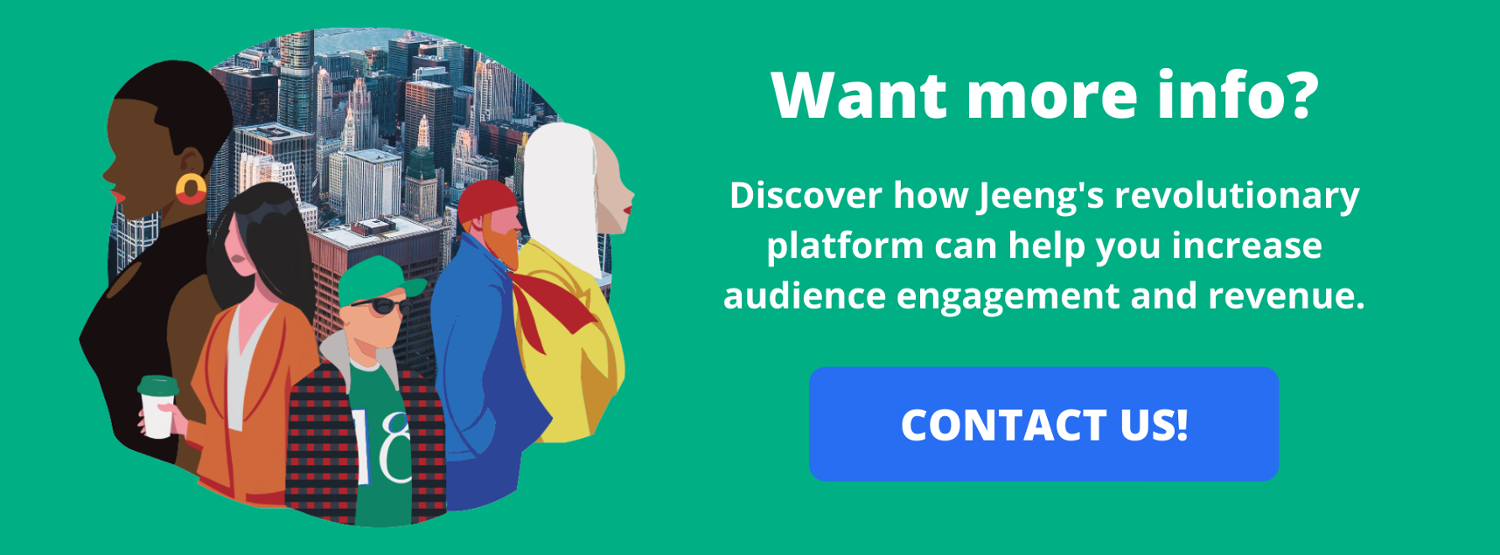Third-party data is going away, and another type of data is coming to the forefront in its place: first-party data.
First-party audience data has always been around as an opt-in, owned, privacy-safe option for publishers and advertisers to track and target their audiences. Third-party data, on the other hand, has come under fire for its lack of transparency and threats to consumer safety. That’s why Safari, Firefox, and soon Google are doing away with third-party cookies on their browsers.

That means publishers and advertisers who haven’t been prioritizing first-party data have to start doing so. Specifically, they must understand why first-party customer data is so important, how to collect it, and how to build first-party data strategies to deliver personalized experiences across the web.
Let’s take a look.
What is first-party data?
First-party data is information that publishers and advertisers collect directly from their audiences. Since this data is exchanged on a one-to-one basis, it’s easy for customers to know what they’re opting into and for businesses to clearly outline the value exchange, i.e. what customers will get in return for providing their information.
A reader might subscribe to a website by entering their email address, for example. That email address is a valuable piece of first-party data that the website owner can then use to send targeted and personalized content, product offers, and advertisements.
What’s the difference between first-, second-, and third-party data?
Now let’s break down two other common types of customer data:
- Second-party data. This is customer information shared between two businesses, such as two publishers pooling their resources to build their audiences. While second-party data offers similar privacy and authentication as first-party data, it’s still not solely owned and collected by one party. Meaning, one or both businesses will have to pay for access to this data.
- Third-party data. This is customer information that one party aggregates from many sources and then sells to other businesses. So when a publisher pays for third-party data, they might get a large data set, but it didn’t come directly from their customers and it isn’t guaranteed to be high-quality or privacy-safe.
One of the biggest differentiators of first-party data is that it’s fully owned and operated by the business that collects it. So while second- and third-party data may offer greater scale, it’s also up for grabs from competitors. And it comes at a price — literally (the cost of buying the data) and figuratively (risk of low-quality or inaccurate data).
Why is third-party data going away?
Major web browsers are disabling third-party cookies in an effort to improve consumer privacy and security on the internet. In many cases, consumers have unknowingly been tracked by third-party cookies or been at risk of data breaches, left in the dark about who is sharing their information and why.
Disabling third-party cookies will force publishers and advertisers to find new, more secure ways to track and target audiences across the web. While solutions like Unified ID 2.0, Google’s Privacy Sandbox have cropped up, there’s one fool-proof solution that businesses can count on for survival: first-party data.
Why is first-party data important?
There are many benefits of first-party data collection and targeting — especially as an alternative to third-party data — including:
- Accuracy. Since customers have to opt in to provide first-party data, you know exactly where it’s coming from. And you know you can use it to reach people who’ve demonstrated that they want to hear from you.
- Transparency. First-party data is safer and more user-friendly for customers. It’s also standardized. A customer can use their email address or phone number across the web, and it’ll be the same from site to site and easy to identify. Meanwhile a third-party company can sell cookies with anonymized or encoded data that’s difficult to decipher.
- Ownership. You own your first-party data, and you can use it to learn about your customers and optimize your campaigns. Unlike with third-party data, you can rest assured that your competitors don’t have access to the same exact information.
- Cost efficiency. With first-party data, you don’t have to buy packaged data sets from other sources. You can instead use your budget and resources to run your own acquisition campaigns for gathering first-party data right from the people who matter most: your consumers.
- Personalization. You can use first-party data to create unique audience segments and target customers based on their interests, preferences, and behaviors. Audiences can even let you know about these interests directly, such as by signing up for certain kinds of newsletters or push notification alerts.

How do you collect first-party data?
You can start collecting first-party data by looking at your one-to-one customer channels. Email, for example, is one of the most valuable sources of first-party data. By asking users to sign up for email newsletters, you can learn about which types of content and messaging frequency they prefer. One reader, for instance, might want weekly news roundups while another wants daily trending stories.
You can also use email to launch surveys, which can then be used to gather more first-party data and feedback directly from your consumers.
How do you activate first-party data?
Once you have this information at your fingertips, you can use it to deliver relevant, customized content to your audiences. For example, you might use it to create audience segments such as:
- Loyal readers
- Active readers
- Inactive subscribers
- Former subscribers
You can then target and retarget these audiences with messaging that most appeals to them and inspires them to engage. For instance, you might upsell loyal readers with information about new membership tiers. And you might retarget former subscribers with discounted offers to rejoin.
You can also use first-party data to launch programmatic advertising and monetize your organic content, driving revenue and helping you meet your bottom line. After all, in a world without third-party cookies, brands will be looking for opportunities to reach verified, built-in audiences with targeted ads. And publishers can give them just that if they take the time to invest in developing a first-party data strategy.


